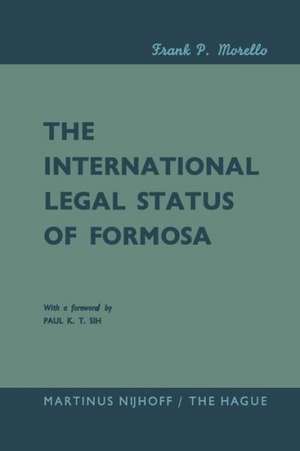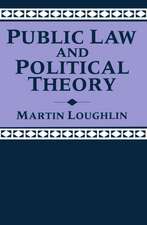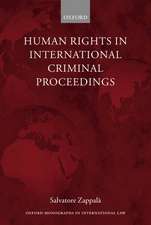The International Legal Status of Formosa
Autor Frank P. Morello, Paul K.T. Sihen Limba Engleză Paperback – 1966
Preț: 377.95 lei
Nou
Puncte Express: 567
Preț estimativ în valută:
72.32€ • 78.87$ • 60.98£
72.32€ • 78.87$ • 60.98£
Carte tipărită la comandă
Livrare economică 24 aprilie-08 mai
Preluare comenzi: 021 569.72.76
Specificații
ISBN-13: 9789401503839
ISBN-10: 9401503834
Pagini: 120
Ilustrații: 107 p.
Dimensiuni: 155 x 235 x 6 mm
Greutate: 0.18 kg
Ediția:1966
Editura: SPRINGER NETHERLANDS
Colecția Springer
Locul publicării:Dordrecht, Netherlands
ISBN-10: 9401503834
Pagini: 120
Ilustrații: 107 p.
Dimensiuni: 155 x 235 x 6 mm
Greutate: 0.18 kg
Ediția:1966
Editura: SPRINGER NETHERLANDS
Colecția Springer
Locul publicării:Dordrecht, Netherlands
Public țintă
ResearchCuprins
I. Introduction.- II. Early History of Formosa.- Original Inhabitants of Formosa.- Early Settlers.- Kingdom of Koxinga.- Legality of China’s Acquisition of Formosa.- Formosa Under Chinese Rule.- Japanese Acquisition of Formosa.- III. Conferences and Declarations: Their Effect on the Status of Formosa.- Cairo Conference.- Potsdam Conference.- Instrument of Surrender.- The Effect of the Cairo, Potsdam Declarations and the Instrument of Surrender on the Status of Formosa.- IV. Claims of the Formosan Nationalists.- Chinese Law on Nationality.- Republic of Formosa.- Formosa as A Province of China.- The Right of the Nationalist Government to Establish Its Seat on Formosa.- The Right of Self-Determination.- Validity of Formosan Claims.- V. International Opinions on the Status of Formosa.- The British Position.- The Russian Position.- The American Position.- The Japanese Position.- The Indian Position.- The Irish Position.- The Two-China Theory.- The Conlon Report.- VI. Claims of the Chinese Communists.- Russia and Its Relations with the Chinese Communists Before the End of World War II.- Russia’s Interference in the Domestic Affairs of China After World War II.- The Legitimacy of the Chinese Communist Government.- China Representation Question and Legal Status of Formosa are Separate but Closely Related Issues.- Chinese Communist Position on the Status of Formosa and the Representation Question.- Validity of Communist China’s Claims.- VII. Claims of the Republic of China.- Nationalist Government is the Legitimate Government of China.- Succession of Governments.- Succession of States.- The Republic of China Has Never Extended Recognition to the Chinese Communists in any Form.- State of Hostilities Still Exists.- San Francisco Treaty of Peace.- Sino-Japanese Treaty ofApril 28, 1952.- Nationalist Government’s Views on Status of Formosa.- Legitimacy of Nationalist China’s Claims.- Transfer of Title Through A Treaty of Cession.- Title Through Prescription.- VIII. Present Status of Formosa.



















